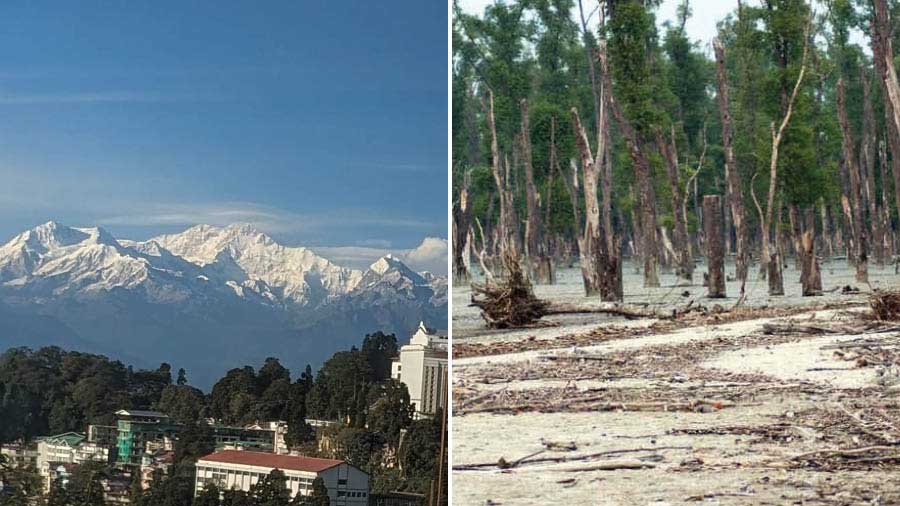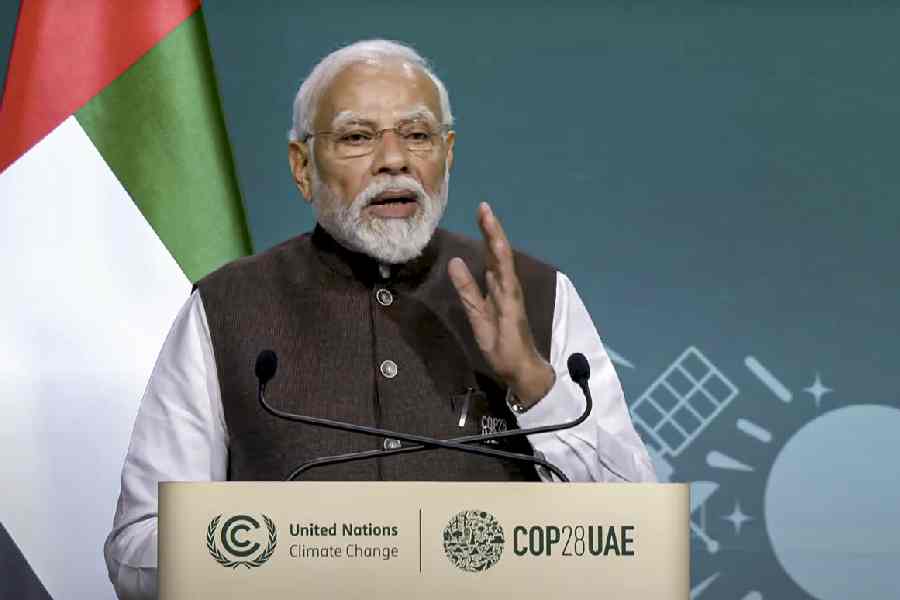A senior official of Adaptation Fund, the global body that finances projects for vulnerable communities in developing countries adapt to climate change, has confided to this reporter at the end of the first week of negotiation in COP 28 at Dubai that the agency has only received around the half of the fund at the COP so far compared to what they minimally require. He also indicated that some of the countries have been siphoning adaptation fund to the newly operationalised loss and damage finance facility
The official, Mikko Ollikainen; the head of the Adaptation Fund, termed the development as “discouraging and worrying.”
Senior climate experts in West Bengal expressed anguish in the development pointing out that West Bengal depends a lot on adaptation programmes. “West Bengal is the only state in the country which has both the Himalayas and the sea coast; both being extremely vulnerable to climate change. In our case, adaptation is the main way forward, and hence this news of adaptation fund shrinking, is not a welcome one” said Nilanjan Ghosh, ecological economist and head of think tank Observer Research Foundation (ORF), Kolkata.
“We have just completed a project in Bankura and Purulia districts with fund support of Adaptation Fund through Nabard and there have been talks of expanding it. The news of adaptation fund not getting adequate fund is extremely unfortunate,” said an expert with non-profit DRCC.
Earlier during informal consultations, developing countries expressed disappointment that the UNFCCC’s Standing Committee on Finance (SCF) failed to arrive at a baseline for the doubling of adaptation finance, a mandate coming from Glasgow COP in which developed countries were “urged to at least double their collective provision of climate finance for adaptation to developing country Parties from 2019 levels by 2025…”.
Inadequate funds
“In March, the Adaptation Board calculated that at least USD300 million is required, and expected that fund to be raised in the COP 28; but so far only around USD 165 million has been promised. It is disappointing and worrying and we hope next week will be better,” said Ollikainen, in an exclusive chat to this reporter recently on the sidelines of the COP proceedings.
The official admitted that the Adaptation Board estimate – USD 300 million – was on the lower side and a compromise considering the need of the vulnerable population and expected contributions from the donor countries. Incidentally, the recently published Adaptation Gap Report of United Nations Environment Programme (UNEP) pointed out that the adaptation finance gap now stands at between USD 194 billion and USD 366 billion per year; and needs 10 to 18 times more money compared to the current international public adaptation finance flow.
Suspicion of money siphoned
When this reporter mentioned that some of the developing countries and civil society representatives have been alleging that part of the adaptation finance is being siphoned to the newly operationalised loss and damage finance facility; he did not disagree.
“I am also hearing this from some of the contributing countries though I cannot name them. It seems that there is political momentum in favour of it (loss and damage fund),” he pointed out. Incidentally there has been commitment close to USD 600 million in loss and damage fund so far during the first week of COP 28 after it got operationalised in the first day of the summit.
“That is excellent news but we have to keep in mind that adaptation and loss and damage are two faces of same coin and if adaptation fails, the loss and damage will get worse,” said Ollikainen reminding that officials from Adaptation Board participated in the loss and damage transitional committee meetings to strengthen the linkage between the two. “We will be happy to extend all help whatever they require” the official added.
At the informal consultations in the last week, some developing countries protested that doubling of the finances could not be ascertained so far; and many stated that even that is not enough quoting the Adaptation Gap Report.
Saber Hossain Chowdhury, Bangladesh’s climate envoy, told this reporter that “fund support is inadequate in all sectors including in adaptation”. Bangladesh is globally known for its climate adaptation processes.
“The fund calculation needs to be benchmarked with the temperature rise. All these calculations have been made considering temperature rise of 1.5 degree Celsius or less, compared to pre industrial period, bit clearly that limit will be breached and now there are talks about 2.5 to 3 degree rise; and in that case far more money will be required in climate finance” added the official reminding that while IPCC reports have called for nearly 43 per cent global emission cut by 2030 to keep the world on track to around 1.5 degree Celsius rise; all the submitted NDCs, cumulatively, can only cut emission to around 5 per cent.


